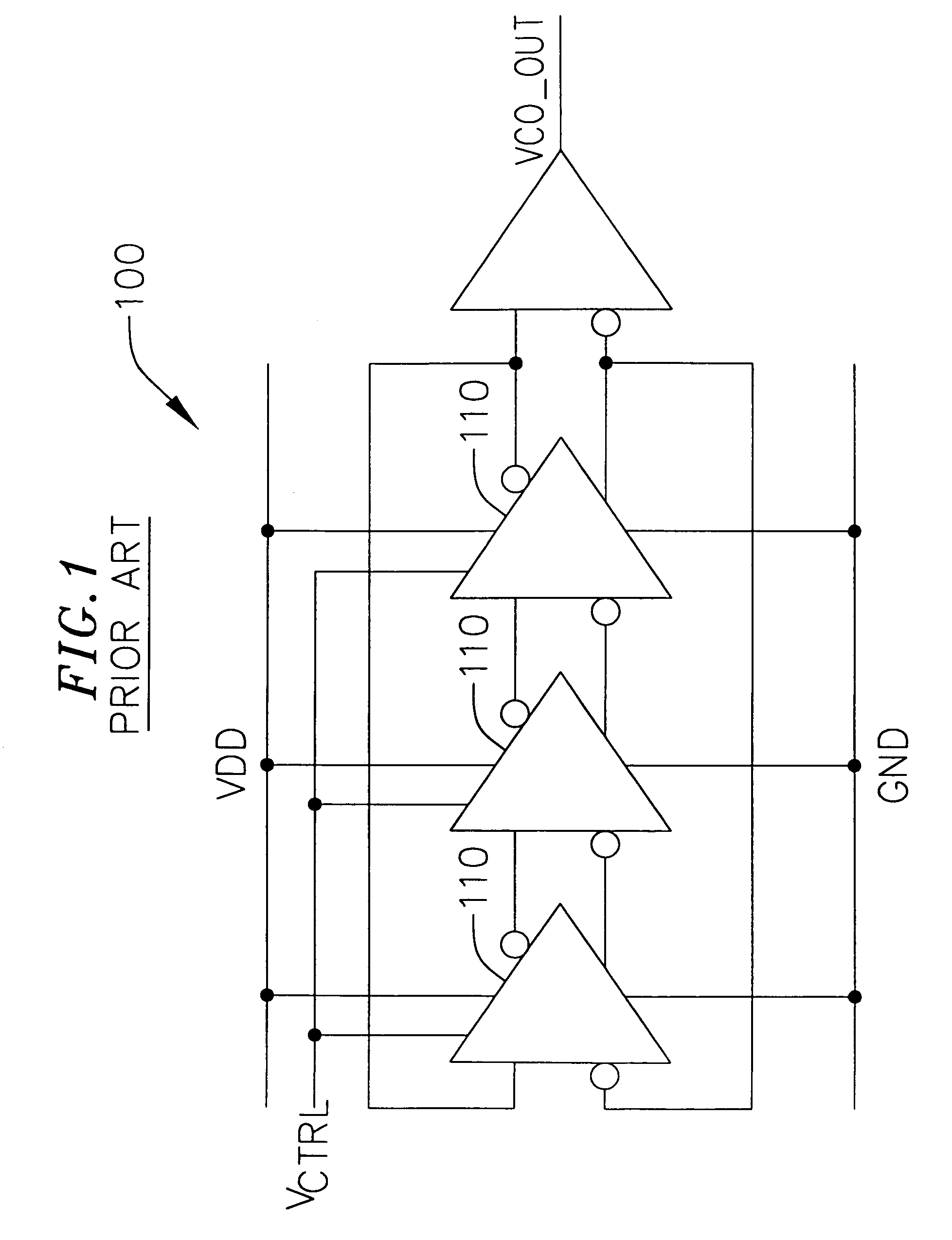High noise rejection voltage-controlled ring oscillator architecture
a ring oscillator and high noise rejection technology, applied in the direction of electric pulse generators, automatic control of pulses, amplifiers, etc., can solve the problems of reducing the accuracy of the pll and the ability to reject noise, so as to improve the noise rejection level, and reduce the coupling of noise
- Summary
- Abstract
- Description
- Claims
- Application Information
AI Technical Summary
Benefits of technology
Problems solved by technology
Method used
Image
Examples
Embodiment Construction
[0018]The present invention comprises a ring oscillator circuit, such as a VCO, with an improved level of noise rejection for noise originating from both the voltage supply and ground, i.e., an improved PSRR. As a result, the output signal generated by the ring oscillator circuit suffers from less jitter than conventional ring oscillator or VCO circuits in the presence of such noise. Consequently, the ring oscillator of the present invention is especially suitable for use as a VCO in integrated circuits that include digital circuits, such as microprocessors or digital signal processors (DSPs). The following description is presented to enable any person skilled in the art to make and use the invention, and is provided in the context of a particular application and its requirements. Various modifications to the preferred embodiment will be readily apparent to those skilled in the art, and the generic principles defined herein may be applied to other embodiments and applications withou...
PUM
 Login to View More
Login to View More Abstract
Description
Claims
Application Information
 Login to View More
Login to View More - R&D
- Intellectual Property
- Life Sciences
- Materials
- Tech Scout
- Unparalleled Data Quality
- Higher Quality Content
- 60% Fewer Hallucinations
Browse by: Latest US Patents, China's latest patents, Technical Efficacy Thesaurus, Application Domain, Technology Topic, Popular Technical Reports.
© 2025 PatSnap. All rights reserved.Legal|Privacy policy|Modern Slavery Act Transparency Statement|Sitemap|About US| Contact US: help@patsnap.com



